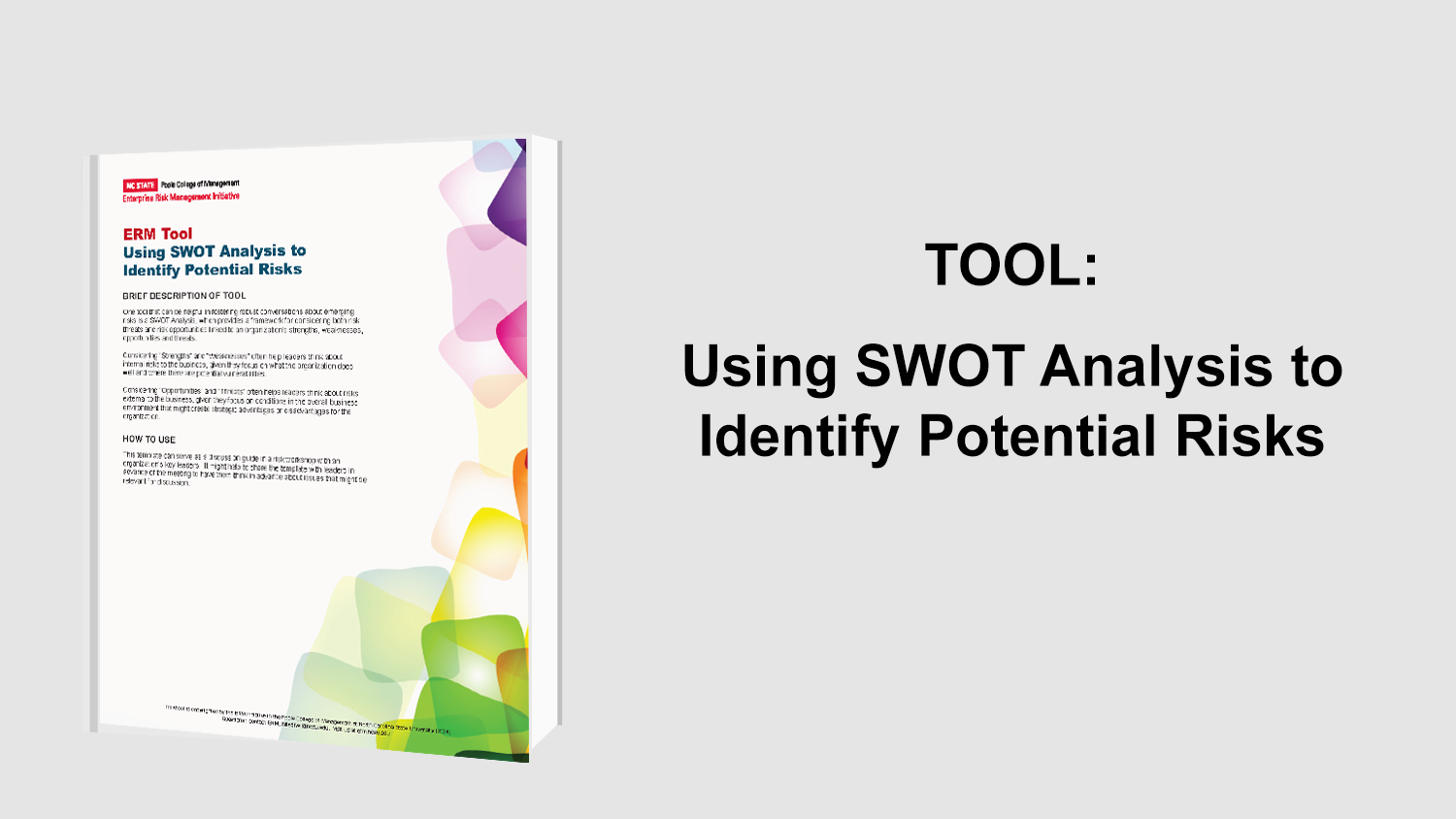Sustainability: Considerations that Can’t be Ignored from a Strategic Perspective
MIT’s Sloan Management Review and the Boston Consulting Group surveyed over 4,000 managers in 113 countries on the topic of sustainability in business and issued a joint Research Report, “Sustainability Nears a Tipping Point,” summarizing their key findings and highlighting lessons learned. The overarching conclusion based on the report is that the sustainability movement is nearing a tipping point. Over 70% of managers surveyed indicated that their organizations have put sustainability permanently on their management agendas, with 20% saying it happened in the last two years. Two-thirds of respondents indicate sustainability is becoming a competitive issue in today’s marketplace, up from 55% in the 2010 survey. A third of them believe their sustainability activities are impacting their profitability and changing how they operate and the strategies they execute. Consideration of issues related to sustainability may not only help the organizations manage risks that might threaten the long-term viability of their business models, but it may also lead to new innovations that can take the organization to new levels.
Positioning Sustainability Thinking in the Context of Strategy
The report, authored by David Kiron, Nina Kruschwitz, Knut Haanaes, and Ingrid von Streng Velken, notes that the term “Sustainable Business” is fairly new and is used to describe an enterprise that has no negative impact on the environment, community, society, or economy. These organizations strive to meet the criteria of the “Three Pillars” or the “Triple Bottom Line,” which consist of people, planet and profit. Usually, a sustainable business has progressive environmental and human rights policies that incorporable sustainability into its business decisions. “Sustainable Businesses” are also viewed as traditionally greener than competitors and are committed to environmental principles in its business operations.
Despite all these positive aspects, boards and C-suite executives are questioning how their sustainability efforts impact their business and strategies in order for those efforts to be “sustainable” themselves. More often, executives are pushing their focus on sustainability to be more integrated with the entity’s strategic business model and viewing sustainability from the lens of evaluating whether the business model will be able to endure over time.
1. Sustainability is firmly on Managers’ Agendas
Given the recent economic times, one would assume most companies are not investing in the “feel-good” aspects of sustainability given the perceived costs of various sustainability related initiatives. However, the MIT Sloan survey shows that 70% of the companies indicated that they have placed sustainability on their management agenda within the last two years.
There are many different reasons, unique to each company, of why they are increasing their sustainability activities. In the survey, 41% of companies listed customers as the most common reason for the change. Research has shown that consumers view sustainability of an entity as a positive characteristic, but companies are being cautious given that customers are not always willing to pay a premium for sustainability focused products or services.
A statement from Chris Librie, director of environmental initiatives at HP, reflects the mindset of the average customer and also presents another reason why an enterprise may choose sustainability. “It’s very difficult to motivate individual customers around sustainability, it’s a nice-to-have, but they’re generally not going to pay more for it. Enterprises are different, because with enterprises, sustainability can be presented as energy savings.” These energy savings translate into reduced costs, which further translate into increased profits for the enterprise.
2. Ahead of the Game: The Leaders in Sustainability
The survey data was used to geographically map the regions of the world where corporate sustainability commitments appear to be present. Surprisingly, companies with the most commitment to increasing sustainability are located in emerging economies, such as Asia-Pacific, South America and Africa. Research has shown that addressing environmental degradation is one of the top priorities of these company’s sustainability plans. Developing countries have long dealt with pollution issues and a lack of clean water. Being in and around this type of environment may be the reason that these entities are so strongly focused on sustainability activities related to environmental preservation.
Much of the drive surrounding sustainability efforts is centered around cutting costs, which is crucial to the bottom line. The MIT Sloan report provides an example from Florida Ice & Farm, a century-old Costa Rican food and beverage company. The company realized its rapid growth strategy would be difficult and decided to alter some of its current operating procedures. Sixty percent of the CEO’s salary is now tied to the triple bottom line indicators previously mentioned. These indicators are measured on a scorecard dealing with financial and nonfinancial measures. As a result, Florida Ice & Farm has decreased its water consumption per liter of beverage produced from 12 liters down to 4.9 liters, which has positively impacted its production costs.
A further example of sustainability and a “thinking outside the box” approach is Jain Irrigation, located in India. Jain has launched a program where the company buys local farmer’s crops at a guaranteed price. This allows the farms to plan ahead and to obtain loans to buy irrigation products. Not only does this increase Jain’s business, but it makes the farmers more efficient in water consumption. The company is also working with farmers to promote “Precision Farming,” which is optimizing the balance between fertilizers, pesticides, water and energy. Precision Farming helps balance the strain on the environment and ensures the fields and soil will be preserved for future farming.
3. A New Cohort: Harvesters come into focus
In the 2010 report, “Sustainability: The Embracers Seize Advantage,” the authors identified a group of companies they described as “Embracers,” which represent those organizations that 1) believe sustainability is necessary to be competitive in the business world, 2) have a business case for sustainability and 3) list sustainability as permanently on the management agenda. The current year report extends the focus to companies that meet the criteria of being an Embracer, but also indicate that their sustainability activities are contributing to their profits. The authors refer to these organizations as “Harvesters.”
Harvesters represent 31% of the participants in the survey and exist in every industry covered within the survey. Harvesters typically have a distinct business model and an overall collective mindset that supports sustainability. Harvesters typically have a CEO that supports and encourages sustainability activities. This leads to individuals within those organizations being assigned certain business segments and divisions and being responsible for sustainability within their specific area. Harvesters are also twice as likely to say that sustainability, which requires increased communication, has increased collaboration among internal business segments within very diverse geographical locations.
Many Harvesters no longer view sustainability as strictly involving environmental concerns. Medical-supply company, Kimberly-Clark, views sustainability as a source of innovation, increased market share and improved profit margins.
When a company implements any kind of new strategy, it is usually met with some resistance. People naturally do not like change, but when a company is cutting costs and those reduced expenses can be specifically linked to the sustainability activities, resistance is hard to muster. As a response, competitors of these Harvesters are seeing the competitive advantage created by the sustainability plans and want to implement their own. This domino effect is causing sustainability to expand within the business world, as no one wants to be left behind by the competition in a world where investors can quickly jump on or off your wagon.
4. Lessons from the Harvesters
Organization Structure – According to the MIT Sloan survey, most Harvesters are not simply implementing sustainability within their current organizational structure. They are instead fostering new structures with specific lines of communication to promote the newly added activities. They also are creating new metrics by which to measure the performance of the sustainability initiative. Many Harvesters are creating the position of Chief Sustainability Officer to oversee the sustainability process. But, this person is not someone who works in the shadows and has little say in business decisions. Rather, most have the backing of the CEO and the support of the Senior Management Committees when it comes to implementation and oversight. Subsequently, 85% of Harvesters say they have a stronger CEO commitment to the company, whereas only 56% of non-Harvesters claim to have that characteristic.
Business Model – When it comes to making the business case for sustainability, Harvesters demonstrate a greater ability compared to other companies. Entities that have adopted a sustainability program typically are more proactive with business decisions and anticipate uncertainties better than their counterparts. The authors of the MIT Sloan report attribute this organizational mindset to the reason that Harvesters can capture comprehensive metrics and measure the intangible effects of brand reputation, employee engagement and employee productivity more accurately. Companies that fail to integrate sustainability activities into their business model typically will not generate profits off of these actions. When a company thinks through their actions, implements the activity correctly, and analyzes any possible adverse effects, profits are at a greater percentage to increase related to that decision.
Operations – In order for a Harvester to be successful at sustainability and have the impact desired, changes to the enterprise’s operations are essential. If change was not necessary, then the company would already be effective in sustainability and not researching how to improve their triple bottom line. Research shows that Harvesters communicate more with customers and suppliers than other companies. This collaboration is the first step a company must take it if is looking to reduce its carbon footprint or social impact. Being a “green” company in itself is good, but many companies, such as Walmart and Procter & Gamble, have gone an extra step to promote innovation among stakeholders inside and outside the company with regards to sustainability. For example, think of the amount of items Walmart logistics moves in a given year. Imagine if carbon emissions were cut by 10% related to those items. The amount of carbon emissions pounds reduced within a given year would be staggering.
The results of MIT Sloan’s survey shows that many companies are investing time and money in sustainability practices for numerous reasons. Pleasing investors, boosting the bottom line or simply wanting to be better on the environment has pushed enterprises around the world to rethink the way they operate. Competitors of these corporations will either watch the Harvesters leave them in the dust or they will jump on board continuing a trend that is not likely to go away.
Original Article Source: “Sustainability Nears a Tipping Point“, MIT Sloan Management Review Magazine, 2012
- Categories:
- Types:


